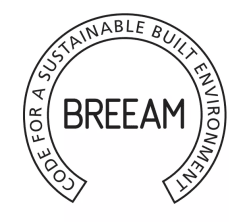
What is BREEAM and does it apply to fasteners?
- Read time: 3 minutes
- Date: 30 Nov 2021
- Flat Roofing
- Rainscreen & Façades
- Sheeting & Cladding
It is also used for master planning projects and infrastructure.
It is a voluntary standard that is recognised globally. It provides independent third-party certification and assesses the environmental performance of a project through its design, specification, construction, and operation. Credits are awarded across nine criteria:
Management
Health and wellbeing
Energy
Transport
Water
Materials
Waste
Land use and ecology
Pollution
Innovation
There are six BREEAM ratings that range from adequate (the lowest) to outstanding (the highest). The rating is displayed using a series of stars on the BREEAM certificate.
Some clients or local authorities may specify that projects must achieve a specific BREEAM rating.

Are building envelope fasteners covered by the materials criteria of BREEAM?
Fixings (such as screws/nails/brackets etc) are excluded from the BREEAM standard. Other materials that are excluded include insulation, adhesives and additives.
If you are currently putting together the paperwork for a BREEAM assessment, documentation for fasteners and fixings are not required.
What materials does BREEAM cover?
The assessor will consider the environmental impact and responsible sourcing of materials in the following categories :
Brick (including clay tiles and other ceramics)
Resin-based composite materials (including GRP and polymeric render but excluding timber-based composites)
In situ concrete (including ready mix and cementitious mortars and renders)
Pre-cast concrete and other concrete products (including blocks, cladding, precast flooring, concrete or cementitious tiles)
Glass
Plastics and rubbers (including polymeric renders, EPDM, TPO, PVC and VET roofing membranes)
Metals (steel, aluminium etc.)
Dressed or building stone (including slate)
Plasterboard and plaster
Virgin timber from certified sources
Cement bonded particle board
Wood panel and wood based composite products (such as Oriented Strand Board, plywood, HPL, chipboard/particle, glulam, LVL, etc.)
Bituminous materials, such as roofing membranes and asphalt
Other mineral-based materials, including fibre cement and calcium silicate
Products with 100% recycled content
Products with a lower percentage of recycled content
Any other product
This information was correct at the time of writing.





